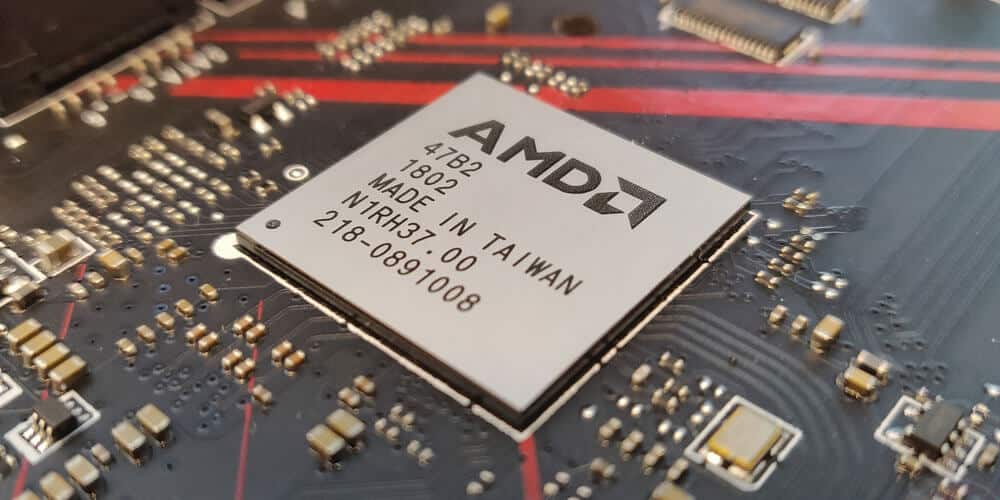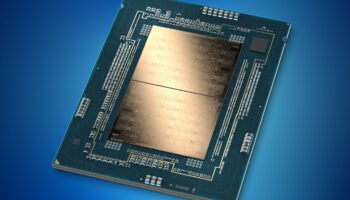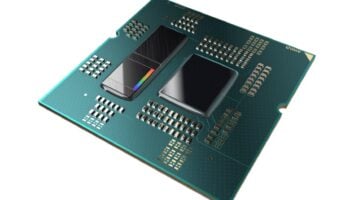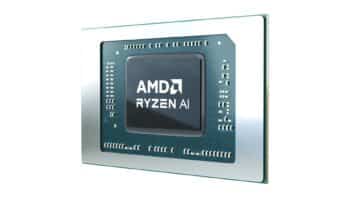AMD’s B450 chipset powered some of the most popular and widely available motherboards for several years. However, with the advent of the newer B550 boards, AMD has been pushing more and more users to upgrade to the 500-series platform, promising several benefits. These additional features do, however, come at a cost. While the cheaper B450 boards started as low as $120, most decent B550 boards cost no less than $150. In this post, we compare the two and see if the latter is worth the additional markup. In short, yes, it very much is but if you’re interested in the technical details and specific advantages of the newer chipset.
AMD B450
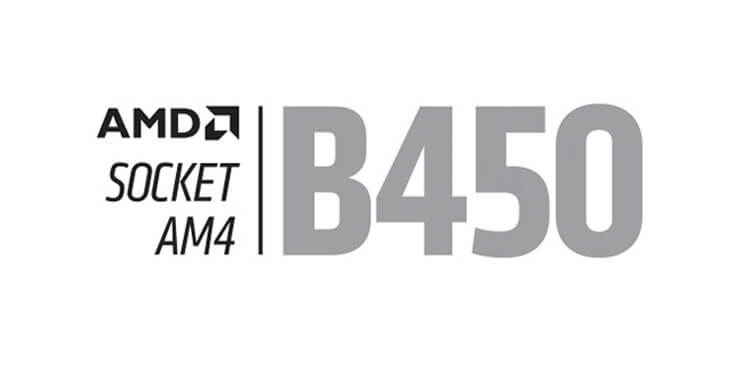
The B450 has easily AMD’s most popular motherboard chipset with several million boards sold to date and counting. A combination of affordable pricing and a wide feature-set made it more popular than both the X370 and X470 lineups combined. Devsjournal had earlier written an article comparing the B450 with the X370, X470, and X570, explaining how the former was the first budget board in its price range to allow overclocking.
It was originally launched for the Ryzen 2000 lineup, featuring nearly all the features of the higher-end X470 chipset. It supports up to two USB 3.1 Gen 2 ports, six USB 3.1 Gen 1 ports, and six SATA 6Gbps ports. The NVMe SSDs are connected directly to the CPU, while the chipset is also connected to the CPU by PCIe 3.0 with a four-lane configuration (actually outputs 6 PCIe 2.0 lanes).
The B450 chipset was originally supposed to support up to the Zen 3 based Ryzen 5000 lineup, but down the line, AMD decided to backtrack on the promise. An outrage or two later, the company finally caved, allowing select 400 series boards to work with the newer processors, but OEMs decided to release the BIOS for just about every board in the end.
Features of AMD B450
- AM4 socket supports up to Zen 3 microarchitecture with the Ryzen 5000 (older AMD B450 models support the new series via an updated BIOS)
- The AMD B450 is the first budget series chipset that enables overclocking.
- Enhanced CPU VRM and memory routing
- The AMD B450 has 14 USB ports (2 of which are 10Gbps USB 3.1 Gen 2) and has a total of 6 maximum SATA ports.
- It uses a PCIe 3.0 interface, with 36 total PCIe lanes, 28 of which are usable.
- The reduced idle power draw of less than 2W means it can be cooled with an extremely tiny heatsink.
- The AMD B450 supports NVMe RAID.
AMD B550
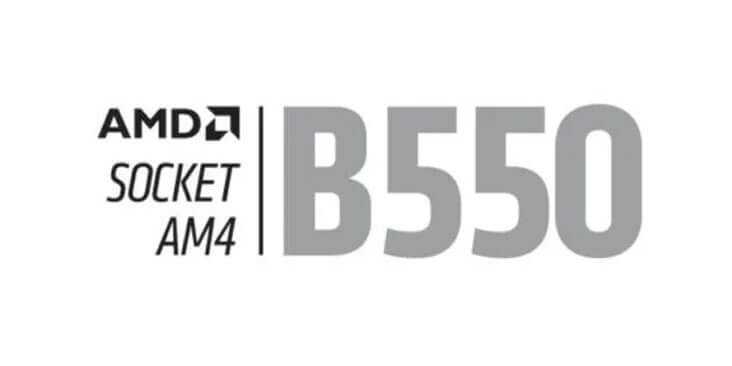
The AMD B550 replaces the older budget AMD B450 series. Many AMD B450 users have been hesitant to upgrade to the AMD B550 as there aren’t many apparent advantages. And while that may be true in some cases, the B550 chipset has many new features such as PCIe 4.0 support for graphics cards, NVMe drives, increased number of USB 3.x ports, faster LAN, and WLAN adapters, enhanced VRMs, and a more advanced PCB.
it may not have that huge technical improvement over the previous design. However, the AMD B550 smashes all expectations. It was able to deliver a product so good. It easily became one of the best, if not the best, budget series chipset available in the market today.
The AMD B550 also supports Zen 3 with the Ryzen 5000 processors out of the box, without the need to flash a new BIOS or any other updates.
Features of AMD B550
- AM4 socket supports Zen 3 microarchitecture out of the box, with Ryzen 5000 processors.
- The AMD B550 is one of the best budget series chipsets, which enables overclocking.
- Enhanced VRM and memory routing.
- The AMD B550 has a total of 14 USB ports, with four total SATA 3.0 ports.
- One of the first budget series chipset to utilize PCIe 4.0 interface, with 38 total PCIe lanes, 30 are usable.
- Improved network connection, now supporting up to 2.5Gbps via LAN, and has WiFi 6 for wireless connectivity.
- Supports NVMe RAID.
AMD B450 vs AMD B550
| CHIPSET | AMD B450 | AMD B550 |
| SOCKET TYPE | AM4 | AM4 |
| OVERCLOCKING | YES | YES |
| PCIe INTERFACE | PCIe 3.0 | PCIe 4.0 |
| PCIe LANES/USABLE | 36/28 | 38/30 |
| TOTAL USB PORTS | 14 | 14 |
| TOTAL SATA 3.0 | 2 | 4 |
| WIRED NETWORK SPEED | 1GBps | 2.5GBps |
| WIRELESS NETWORK | WIFI 5 (IEEE 802.11 AC) | WIFI 6 (IEEE 802.11ax) |
| MULTI-GPU SUPPORT | CROSSFIRE | CROSSFIRE & SLI |
| SUPPORTED ZEN MICROARCHITECTURE | SUPPORTS UP TO ZEN 3 (ZEN 3 SUPPORT IS COMING IN OLDER AMD B450 MODELS) | ZEN 3 & ABOVE (CURRENTLY NO SUPPORT FOR OLDER MICROARCHITECTURES) |
| RAID SUPPORT | YES | YES |
AMD B450 vs AMD B550: Compatibility

Both the AMD B450 and B550 platforms utilize the AM4 socket design, with certain key differences. Zen 3 support has now been brought to nearly every B450 board (with some exceptions), but the B550 lineups generally have a wider range of processors supported with each particular BIOS version.
AMD B450 vs AMD B550: PCIe Support
For the PCIe interface, the newer AMD B550 has a huge advantage over the AMD B450. The AMD B550 features PCIe 4.0, which is twice as fast as the PCIe 3.0 on the AMD B450. PCIe 4.0 allows a data rate of up to 16GT/s compared to just 8GT/s on the AMD B450. This translates to 32GB for a PCIe x16 discrete GPU slot, or 32GB considering bi-directional transfers. PCIe 4 also allows NVMe drives with transfer rates as high as 7GB/s.
AMD B450 vs AMD B550: Multi-GPU support
The AMD B550 boards are also the first B-series platform to support NVIDIA’s multi-GPU SLI technology, in addition to XFX. The older B450 platform only supported CrossFire. However, support for SLI and XFX is severely limited with only one or two games out of every dozen showing substantial scaling with every additional GPU.
AMD B450 vs AMD B550: Network Speed
Network speeds are also a notch higher on the B550 boards. The newer chipset supports wired network speeds via LAN, reaching up to a whopping 2.5Gbps, more than twice as much as what the B450 platform supports (1Gbps).
Furthermore, the AMD B550 supports WiFi 6, versus the Wifi 5 on the older AMD B450. While WiFi 5 is sufficient for most people, its successor is vastly superior. WiFi 6 has a maximum bandwidth of 10Gbps which is nearly 3x more than the 3.5Gbps supported by WiFi 5.
AMD B450 vs AMD B550: Overclocking
As for overclocking, AMD B450 was the first budget chipset to allow enthusiast-level overclocking support. Earlier, it was only limited to the higher-end Xx70 boards, The AMD B550 inherits this feature, supporting overclocking for both the memory as well as the CPU.
Conclusion
If you presently own a higher-end B450 board, then upgrading to a B550 offering may not be the best option. However, if your board lacks some of the newer features such as enhanced I/O, lighting, network, or HD/surround audio, then a B550 board may be a worthy upgrade, especially if you’re in the market for a new CPU. Nearly all OEMs have a Ryzen 5000/B550 bundle available at great prices.
